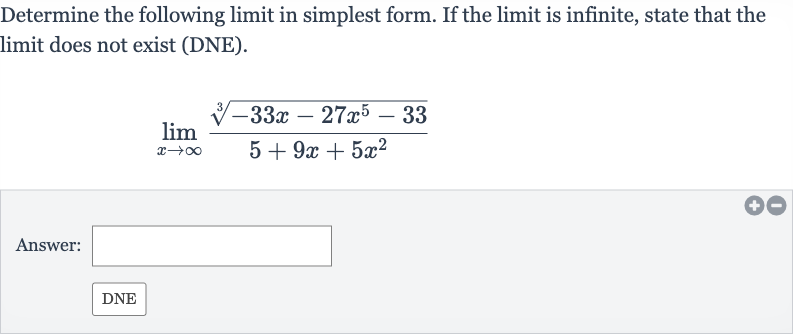Full solution
Q. Determine the following limit in simplest form. If the limit is infinite, state that the limit does not exist (DNE).Answer:
- Identify highest power: We have the limit: First, we observe the highest power of in the numerator and the denominator to simplify the expression.
- Divide by : In the numerator, the highest power of is , and in the denominator, the highest power of is . To simplify, we divide both the numerator and the denominator by .
- Rewrite the limit: We rewrite the limit as:
- Ignore terms with : As approaches infinity, the terms with in the denominator will approach zero. So, we can ignore the terms and in the numerator and and in the denominator.
- Simplify the limit: The limit simplifies to: \lim_{x \to \infty}\left(\sqrt[\(3]{x^}\right)/
- Take cube root: We can now take the cube root of , which simplifies to .
- Final limit: The limit is now:
- Approach negative infinity: As approaches infinity, will also approach negative infinity.
- Limit does not exist: Therefore, the limit does not exist (DNE) because the function approaches negative infinity.
More problems from Power rule
QuestionGet tutor help
QuestionGet tutor help
QuestionGet tutor help
QuestionGet tutor help
QuestionGet tutor help

